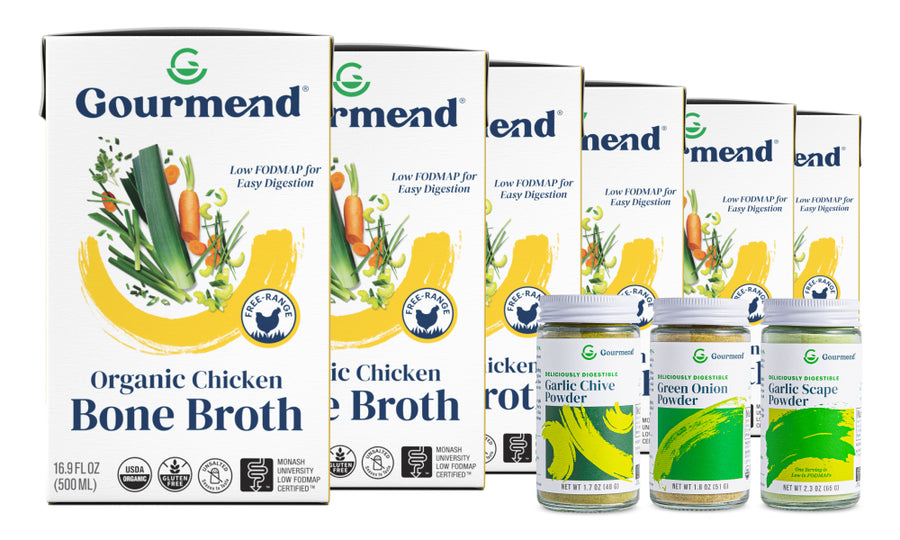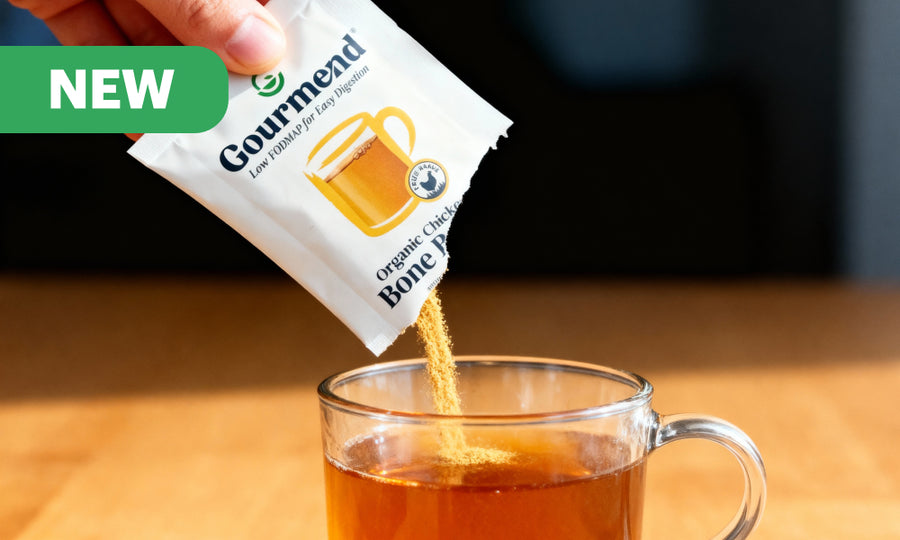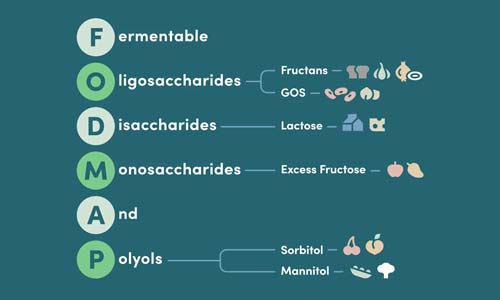Is Sourdough Low FODMAP? Complete Gourmet Guide

Key Takeaways
- Sourdough bread can be easier to digest for those with sensitive guts due to its fermentation process.
- The fermentation time significantly impacts whether sourdough is low FODMAP or not.
- The type of flour used in sourdough affects its FODMAP content and digestibility.
- Not all sourdough breads are equally gut-friendly, and authenticity markers are often missing from labels.
- Choosing the right sourdough requires attention to specific factors to avoid digestive discomfort.
Table of Contents
- Quick Answer, Is Sourdough Bread Low FODMAP?
- What Are FODMAPs and Why Do They Matter for Digestion?
- Sourdough 101, Traditional vs. Commercial Sourdough
- Why (and How) Does Fermentation Lower FODMAPs in Sourdough?
- Which Sourdough Breads Are Actually Low FODMAP? Types, Flours, and Servings
- Decoding Sourdough Ingredient Labels, Your Low FODMAP Checklist
- How to Make Your Own Low FODMAP Sourdough Bread, Home Baker's Guide
- Sourdough Bread Comparison, FODMAPs, Flavor, and Fit for Sensitive Guts
Is Sourdough Low FODMAP? The Complete Gourmet Guide for Sensitive Guts
For those navigating digestive sensitivities while refusing to sacrifice flavor, sourdough presents an intriguing paradox. This ancient bread-making technique transforms high FODMAP wheat into something potentially gentler, but not all sourdough is created equal. The difference between gut-friendly and gut-wrenching lies in fermentation time, flour choice, and authenticity markers most bread labels conveniently omit.
Understanding whether is sourdough low FODMAP requires diving beyond marketing claims into the science of fermentation, the reality of commercial shortcuts, and the specific serving sizes that make or break digestive comfort. We'll decode ingredient labels, compare traditional versus fast-track methods, and reveal which sourdough varieties earn their place in a gourmet, gut-friendly kitchen.
If you're looking to stock your pantry with safe, flavorful options, explore our Low FODMAP Bundles for a curated selection of gut-friendly essentials.
Quick Facts: Sourdough FODMAP Status
- Traditional wheat sourdough: Low FODMAP at 2 slices (109g) - Monash University tested
- Spelt sourdough: Generally safest option with lowest FODMAP content
- Commercial "sourdough": Often high FODMAP due to short fermentation times
- Key factor: Minimum 12-hour fermentation required for FODMAP reduction
Yes, authentic sourdough can be low FODMAP, but the answer hinges on fermentation duration and flour type. Monash University research confirms that properly fermented wheat sourdough reduces fructan content to safe levels, specifically 2 slices or 109 grams per serving.
| Sourdough Type | FODMAP Status | Safe Serving | Key Requirement |
|---|---|---|---|
| Traditional Wheat | Low FODMAP | 2 slices (109g) | 12+ hour fermentation |
| Spelt Sourdough | Low FODMAP | 2 slices | Traditional starter |
| Commercial Fast | High FODMAP | Avoid | Insufficient fermentation |
| Rye Sourdough | Moderate FODMAP | 1 slice max | Personal tolerance varies |
The fermentation process breaks down problematic fructans through bacterial action, but only when given adequate time. Commercial breads labeled "sourdough" often skip this crucial step, relying on vinegar for tang instead of true fermentation benefits.
What Are FODMAPs and Why Do They Matter for Digestion?
FODMAPs, fermentable oligosaccharides, disaccharides, monosaccharides, and polyols, are specific carbohydrates that resist digestion in sensitive individuals. When these compounds reach the large intestine undigested, gut bacteria ferment them rapidly, producing gas, bloating, and digestive discomfort that can derail even the most carefully planned meals.
Traditional wheat bread contains high levels of fructans, a type of oligosaccharide that triggers symptoms in roughly 15% of the population. These same fructans give bread its satisfying texture and subtle sweetness, explaining why elimination feels like such a culinary loss. The challenge becomes finding ways to neutralize these compounds without sacrificing flavor depth.
High FODMAP Bread Ingredients to Avoid:
- Wheat flour (in non-fermented forms)
- Honey or agave (high fructose)
- Inulin (added fiber)
- Apple juice concentrate (excess fructose)
Spotting hidden FODMAPs requires reading beyond the front label. Look for terms like "natural flavoring" which may contain garlic powder, or "enriched flour" combined with sweeteners. Two actionable tips: scan for ingredients ending in "-ose" (often sugars) and question any bread that lists more than six ingredients, complexity often masks FODMAP-heavy additives.
Sourdough 101, Traditional vs. Commercial Sourdough

Authentic sourdough relies on wild yeast and lactobacillus bacteria cultivated in a living starter, requiring 12-48 hours of slow fermentation to develop flavor and reduce FODMAPs. This extended timeline allows beneficial bacteria to consume fructans and other problematic compounds, transforming wheat into something digestively manageable.
Commercial "sourdough" shortcuts this process dramatically, often fermenting for just 2-4 hours before adding baker's yeast for quick rising. Manufacturers then introduce vinegar or citric acid to mimic sourdough's characteristic tang, bypassing the bacterial fermentation that provides digestive benefits. The result tastes similar but retains wheat's original FODMAP content.
| Feature | Traditional Sourdough | Commercial Sourdough |
|---|---|---|
| Fermentation Time | 12-48 hours | 2-4 hours |
| Starter Type | Wild yeast + lactobacillus | Baker's yeast + vinegar |
| Common Additives | Flour, water, salt, starter | Preservatives, dough conditioners, citric acid |
| FODMAP Reduction | Significant (up to 90%) | Minimal to none |
Reading ingredient labels reveals the truth: authentic sourdough lists only flour, water, salt, and starter. Commercial versions include preservatives like calcium propionate, dough conditioners, and multiple yeasts. When touring bakeries, ask specifically about fermentation duration, true artisans will proudly detail their 18-24 hour process, while commercial operations often deflect or mention "proprietary methods."
Why (and How) Does Fermentation Lower FODMAPs in Sourdough?
The fermentation process transforms wheat through bacterial breakdown of fructan chains, the primary FODMAP culprits in regular bread. Lactobacillus bacteria in sourdough starter produce enzymes that cleave these complex carbohydrates into simple sugars, which are then consumed as bacterial fuel. Research shows properly fermented wheat sourdough reduces fructan content by 70-90% compared to conventional bread. For a deeper dive into the science, see this detailed review of sourdough fermentation and FODMAP reduction.
Time determines effectiveness, bacterial populations need 16-24 hours to achieve optimal FODMAP reduction. Studies demonstrate that fermentation shorter than 12 hours leaves significant fructan residue, while extended fermentation beyond 24 hours can actually begin breaking down beneficial compounds without additional FODMAP benefits.
The Fermentation Process:
- Hour 0-6: Wild yeast activates, begins breaking down starches
- Hour 6-16: Lactobacillus bacteria multiply, targeting fructans
- Hour 16-24: Peak FODMAP reduction achieved
- Hour 24+: Flavor development continues, minimal additional FODMAP change
When shopping, ask bakeries about their fermentation timeline. Artisan bakers track starter feeding schedules and can specify exact fermentation windows. This knowledge empowers confident choices, understanding the science means recognizing authentic low FODMAP sourdough versus marketing claims.
Which Sourdough Breads Are Actually Low FODMAP? Types, Flours, and Servings
Monash University testing reveals significant variations across sourdough flours. White wheat sourdough leads with the clearest low FODMAP status at 2 slices (109g), while spelt sourdough often tests even lower in residual FODMAPs due to its naturally different fructan structure. Wholemeal wheat requires more caution, 1 slice maximum due to concentrated fiber and residual fructans.
Oat sourdough presents a middle ground at 1 slice per serving, though individual tolerance varies significantly. Rye sourdough remains problematic even after fermentation, with most sensitive individuals experiencing symptoms beyond half a slice. Kamut and other ancient grains follow similar patterns to spelt but lack extensive testing data.
| Flour Type | FODMAP Risk | Safe Serving | Best For |
|---|---|---|---|
| White Wheat | Low | 2 slices (109g) | First-time sourdough trials |
| Spelt | Lowest | 2 slices | Highly sensitive individuals |
| Wholemeal Wheat | Moderate | 1 slice | Occasional indulgence |
| Oat | Moderate | 1 slice | Gluten-sensitive options |
| Rye | High | ½ slice max | Flavor accent only |
For Sunday brunch scenarios, spelt sourdough provides the safest foundation for elaborate toppings without digestive consequences. Portion control remains crucial, even low FODMAP sourdough becomes problematic when consumed in large quantities. Consider using Gourmend's recipe conversion tool to plan meals around appropriate serving sizes.
If you're seeking delicious ways to enjoy your sourdough, try pairing it with recipes like Low FODMAP Miso Salmon for a gourmet, gut-friendly meal.
Decoding Sourdough Ingredient Labels, Your Low FODMAP Checklist

Authentic sourdough labels read like poetry: flour, water, starter, salt. That's it. Commercial "sourdough" labels tell a different story, packed with preservatives, sweeteners, and shortcuts that compromise both flavor and FODMAP status.
Red flags to avoid:
- Baker's yeast listed alongside starter, indicates rushed fermentation
- Honey, high fructose corn syrup, or agave, high FODMAP sweeteners
- Vinegar or citric acid, often used to mimic sourdough tang without proper fermentation
- Preservatives like calcium propionate, unnecessary in true sourdough's naturally acidic environment
Smart Shopping Tip: Ask your bakery about fermentation time. Authentic sourdough requires minimum 12 hours, ideally 18-24 hours. If they can't answer or mention "overnight," keep looking.
For maximum flavor enhancement, brush your sourdough with oils infused with chive sprigs or green leek tops, delivering that coveted savory depth without digestive distress. For a creative side, consider these Low FODMAP Crisp Roasted Baby Potatoes to round out your meal.
How to Make Your Own Low FODMAP Sourdough Bread, Home Baker's Guide
Creating your own low FODMAP sourdough puts you in complete control of ingredients, fermentation time, and portion sizes. Here's your roadmap to bakery-quality results.
Essential Ingredients & Equipment
Ingredients (makes 1 loaf):
- 500g spelt flour or white wheat flour
- 350ml filtered water
- 100g active sourdough starter (wild yeast only)
- 10g sea salt
- 2 tbsp chive sprigs, finely chopped (optional, for savory depth)
The 48-Hour Process:
Day 1 - Evening (6 PM): Mix flour and water, let rest 30 minutes. Add starter and salt, knead until smooth. First rise: 12 hours at room temperature.
Day 2 - Morning (6 AM): Perform 4 sets of stretch-and-folds, 30 minutes apart. Shape into boule, place in banneton or bowl lined with floured cloth.
Day 2 - Evening: After 8-10 hours final proof, score and bake at 450°F in Dutch oven, 30 minutes covered, 15 minutes uncovered.
The extended fermentation is crucial, is sourdough low FODMAP depends entirely on giving wild yeast and lactobacilli adequate time to break down those troublesome fructans.
Troubleshooting common issues:
- Bread rises too quickly: Lower room temperature or reduce starter amount
- Dense, gummy texture: Extend fermentation time or check starter activity
- Overly sour flavor: Reduce fermentation time slightly or keep starter cooler
For recipe modifications and low FODMAP ingredient swaps, explore our recipe conversion tool.
Sourdough Bread Comparison, FODMAPs, Flavor, and Fit for Sensitive Guts
Not all bread is created equal. Here's how sourdough stacks up against alternatives for those prioritizing digestive comfort without sacrificing gourmet flavor.
| Bread Type | FODMAP Level | Fermentation Time | Flavor Profile | Best Serving Size |
|---|---|---|---|---|
| Traditional Sourdough (Spelt) | Low (1 slice) | 18-48 hours | Complex, tangy, nutty | 1 slice (35g) |
| Traditional Sourdough (Wheat) | Low (2 slices max) | 18-48 hours | Classic tang, chewy | 2 slices (109g) |
| Commercial "Sourdough" | High | 2-4 hours | Mild, artificially tangy | Avoid |
| Regular Wheat Bread | High | 1-3 hours | Sweet, soft | Avoid |
| Gluten-Free Bread | Variable | 1-2 hours | Often dense, sweet | Check ingredients |
For more on how FODMAPs affect bread and digestion, explore this comprehensive review of FODMAPs and gastrointestinal health. You might also enjoy our Simple Low FODMAP Gourmet Risotto for another satisfying, gut-friendly meal idea.
Frequently Asked Questions
How does the fermentation time affect the FODMAP content in sourdough bread?
Longer fermentation times, typically at least 12 hours, allow natural enzymes and bacteria to break down FODMAPs like fructans in sourdough. This process reduces the FODMAP content, making the bread easier to digest for sensitive guts.
Which types of sourdough breads are considered low FODMAP and safe for sensitive digestion?
Traditional wheat sourdough with a long fermentation and spelt sourdough are generally low FODMAP and better tolerated. Serving sizes matter too, up to 2 slices (about 109g) of properly fermented sourdough are usually safe for sensitive digestion.
Why are commercial sourdough breads often higher in FODMAPs compared to traditional sourdough?
Commercial sourdough breads often use shorter fermentation times to speed production, which doesn’t allow enough breakdown of FODMAPs. This results in higher fructan levels, making them less gut-friendly than traditional, slow-fermented sourdough.
What should I look for on sourdough ingredient labels to ensure the bread is truly low FODMAP?
Look for clear indications of long fermentation times and simple ingredients like wheat or spelt flour without added high FODMAP ingredients. Authentic sourdough will avoid shortcuts and include markers like natural starters rather than commercial yeast.





